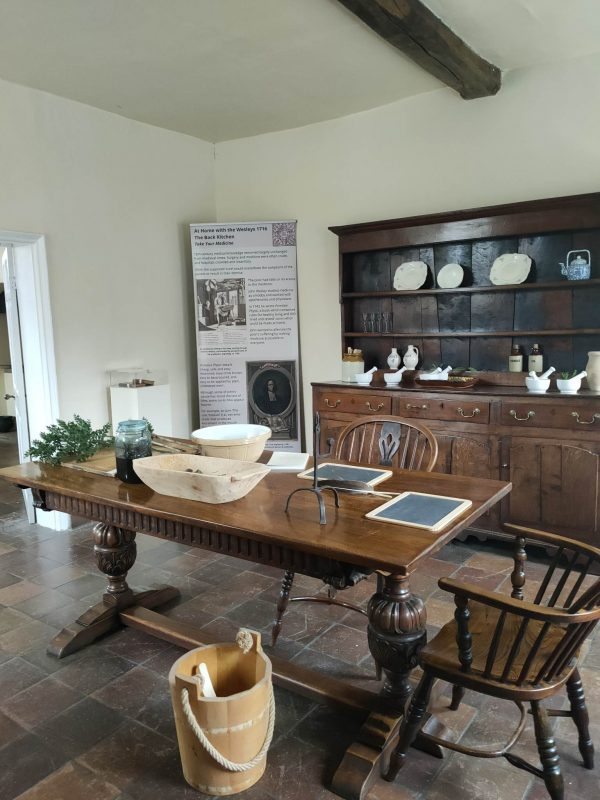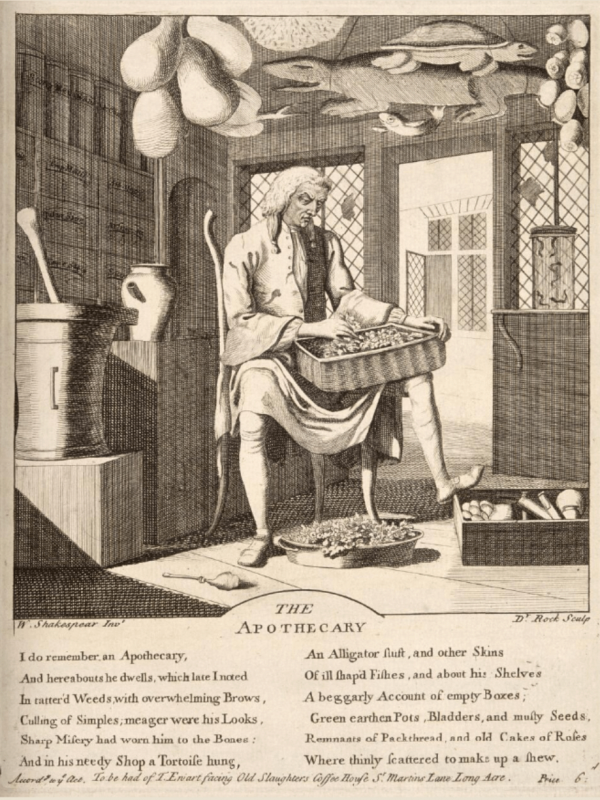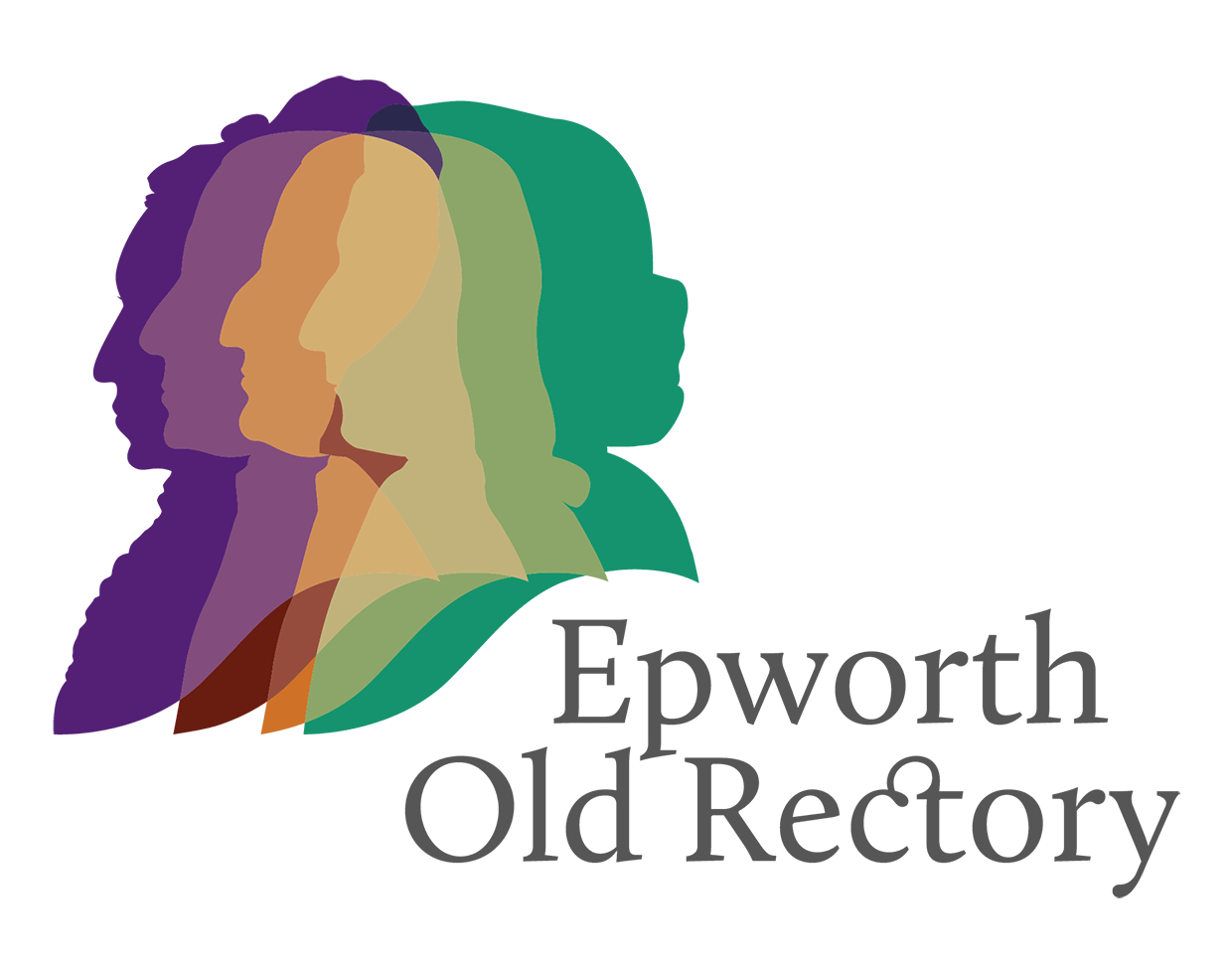What Was Life Like in the 18th Century?
by Epworth Old Rectory on July 11th, 2023 in blog


The 18th century was one of the most fascinating and volatile periods in British history. From the start of the British Empire to the Age of Revolution, it was a time of drastic transformation.
Amid such irrevocable change, what was life actually like for the average 18th-century person?
Our new At Home With the Wesleys 1716 Exhibition unveils compelling stories about 18th-century life. In this article, you’ll learn about some of the exciting themes we explore throughout the exhibition.
This is your opportunity to delve into the weird and wonderful lives of 18th-century people for the first time.
Let’s get started!
18th Century Medicine
Did you know that people during the 18th century made their medicine at home? Most ordinary households couldn’t afford to pay for a doctor or go to the apothecary so they often took medicinal matters into their own hands.
John Wesley, the founder of Methodism, wrote Primitive Physick or An Easy and Natural Method of Curing Most Diseases in 1746. Proper medical treatment wasn’t readily available like it is today. John endeavored to demystify medical knowledge to alleviate suffering within poorer communities. A very socially progressive move for that time!
Primitive Physick contains Wesley’s guide to a healthy lifestyle and 800 herbal remedies to cure various ailments and illnesses.
For example, a recommended cure for baldness was to rub your head with one onion until very red and then cover it in honey. If somebody was suffering from dull eyes, it was thought a few drops of rotten apples would surely do the trick! The “Green Sickness”, which mainly affected young women, included symptoms such as paleness, fainting, and dizziness – what we may now recognise as anemia. The proposed cure involved filing down steel into a fine powder, mix with red candy and consume each morning.
It’s safe to say, we won’t be trying any of these 18th-century cures at home… and neither should you!
Primitive Physick became a bestseller and is still in print today. In fact, the 19th-century medical herbalist John Boot set up his business selling and used Wesley’s book as his source of knowledge. His son, Jesse Boot, followed in his father’s footsteps and established The Boots Company. Who’d have thought the UK’s leading pharmacy-led health and beauty retailer was founded on Primitive Physick?!

Very Superstitious
The 17th and 18th centuries saw the emergence of an Age of Enlightenment where science and rationalism took precedence over superstitious beliefs.
Although magicians, ghosts, and witches were – for the most part – confined to the mythical realms of storybooks, many 18th-century households still took precautions against evil entities.
For instance, rowan loops were discovered at Epworth Old Rectory when the hearth in the Fore Kitchen was restored. Rowan loops were thought to be used as amulets against witchcraft, ghosts, fairies, and the evil eye. A concealed shoe was also found in the same place which was believed to protect the house from evil. Thousands of concealed shoes have been found across the UK in all types of pre-20th-century buildings. There is no evidence that the Wesleys were superstitious but we can guess that someone was worried enough to conceal charms in the fabric of the building!
Whether you’re superstitious or not, many of these “just in case” rituals – from refusing to walk under ladders to crossing your fingers – still ring true today.
“Don’t Let the Bedbugs Bite!”
“Sleep tight, don’t let the bedbugs bite!” is a familiar saying many of us say in jest before bedtime. However, most beds in the 18th century were infested with these prolific creepy crawlies.
18th-century beds were made from wooden frames and ropes to suspend the mattress. The mattress would easily sag so you’d need to regularly tighten the ropes for a comfortable night’s rest – which is how the phrase “sleep tight” came into being! Bedbugs were a common problem for 18th-century people because mattresses were often stuffed with materials like straw or cornhusks which attracted pesky pests.
A manual called the Complete Vermin-Killer, written in 1777 states “These venomous insects are seldom found in Rooms where there are no beds” and recommends using various methods to get rid of the bugs. For example, you could try, “boil a handful of Wormwood and white Hellebore in a proper quantity of Urine, till half of it is evaporated; and wash the joints of your bedsteads with the remainder.”

Where’s the Fire?
Fires were a common occurrence in the 18th century. Most houses were built with wattle, daub, and thatched roofs which were highly flammable. The fire service didn’t exist during that time so it was up to the local community to rally together if a building was ablaze.
A huge fire occurred at Epworth Old Rectory in 1709 and the house that first stood completely burned down. Fortunately, all members of the Wesley family survived but they lost everything. John Wesley was a young boy at the time and was the last to be rescued from the burning building. He appeared in a window where the locals formed a human ladder. John managed to escape just as the thatched roof caved in; an experience that shaped him as a leader because he was saved by God. Recalling that momentous day, John wrote:
“When they brought me into the house where my father was, he cried out, “Come, neighbors, let us kneel down; let us give thanks to God! He has given me all my eight children; let the house go; I am rich enough.’”
The Wesleys rebuilt the Rectory (the building that stands today) although it was considered an extremely modern house for its time. Made from brick, the new Rectory was assembled in a year and boasted an upstairs corridor separating each bedroom. Houses in the Early Modern period before the 18th century didn’t have corridors. Often family members would sleep in the same rooms or you’d have to walk through one bedroom to get to another.
The construction of a corridor allowed each room to be separate from each other which marked an age of privacy – a luxury the Wesleys hadn’t had before!
Come Visit Us at Epworth Old Rectory
Come visit us at Epworth Old Rectory to learn all about the fascinating lives of 18th-century people.
At Home With the Wesleys 1716 Exhibition will be on display from 1st April – 20th October 2023.
And if your inner 18th-century history buff isn’t quite satisfied, we recommend coming along to our special living history day on Saturday 12th August. Meet the Wesleys will be a fun-filled day of costume characters, historical trails, and many more exciting 18th-century-themed activities.
Be sure to visit our events page to find out more.
We look forward to seeing you there!
Image credits:
Image 1: The Hard Working Mother, Jean-Baptiste-Simeon Chardin, 1740. Louvre, Paris.
Image 2: An apothecary sitting in his shop, sorting through materia medica, surrounded by paraphernalia of his profession. Engraving, ca. 1750.







